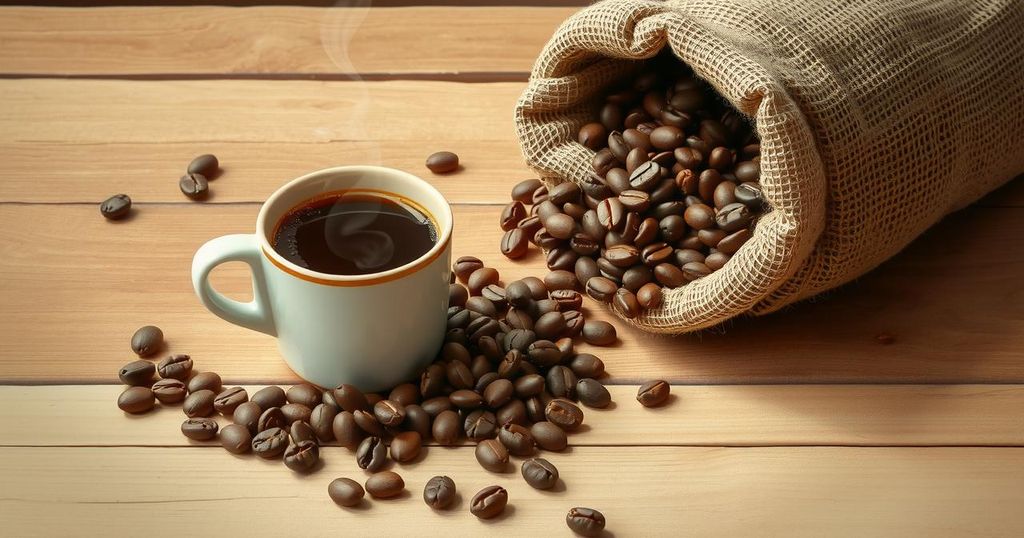Coffee Prices Rise Amid Brazilian Drought and Currency Strength

Coffee prices rose on Monday, driven by dry conditions in Brazil and a robust Brazilian real. Projections indicate an increase in global coffee production for 2024/25, albeit with declining inventories and estimates of reduced production for Brazil in subsequent years.
On Monday, coffee prices experienced a moderate increase, attributed to dry weather in Brazil and the strengthening of the Brazilian real. Specifically, May arabica coffee (KCK25) rose by 5.20 cents or 1.64%, while May ICE robusta coffee (RMK25) climbed by 77 cents or 1.43%. Reports from Somar Meteorologia indicate that Brazil’s leading arabica-growing region, Minas Gerais, received only 30.8 mm of rain in the week ending March 15, which is 71% of the usual average.
In addition, projections from the Brazilian real suggest that global coffee production for the 2024/25 season may increase by 4.0% year-on-year, reaching 174.855 million bags. This includes a projected 1.5% rise in arabica production to 97.845 million bags and a 7.5% increase in robusta production to 77.01 million bags. The USDA’s Foreign Agricultural Service (FAS) expects that the ending stocks for 2024/25 will decline by 6.6%, hitting a 25-year low of 20.867 million bags, down from 22.347 million bags for the 2023/24 period.
Additionally, the USDA’s FAS had previously forecasted Brazil’s 2024/25 coffee production to be 66.4 million metric tons, a decrease from their prior estimate of 69.9 million metric tons. The agency anticipates Brazil’s coffee inventories to be at 1.2 million bags by the end of the 2024/25 season, reflecting a year-on-year reduction of 26%.
Looking further ahead to the 2025/26 marketing year, Volcafe revised its estimates on December 17 to project Brazil’s arabica coffee production at 34.4 million bags, a reduction of approximately 11 million bags since September. The firm also anticipates a global deficit of 8.5 million bags for arabica coffee in 2025/26, which is larger than the 5.5 million bag deficit expected for 2024/25, marking the fifth consecutive year of deficits.
It is important to note that Rich Asplund, the author of this article, disclosed that as of the publication date, he did not hold any positions in the mentioned securities. All the information provided is for informational purposes only, and for a detailed policy disclosure, readers are encouraged to refer to the Barchart Disclosure Policy.
In summary, coffee prices have risen due to adverse weather conditions in Brazil and a stronger Brazilian real. Production forecasts indicate both increases and significant deficits in coffee supply, particularly affecting arabica coffee. As Brazil grapples with drought, production estimates may continue to shift, impacting future global coffee availability and market dynamics.
Original Source: www.tradingview.com








